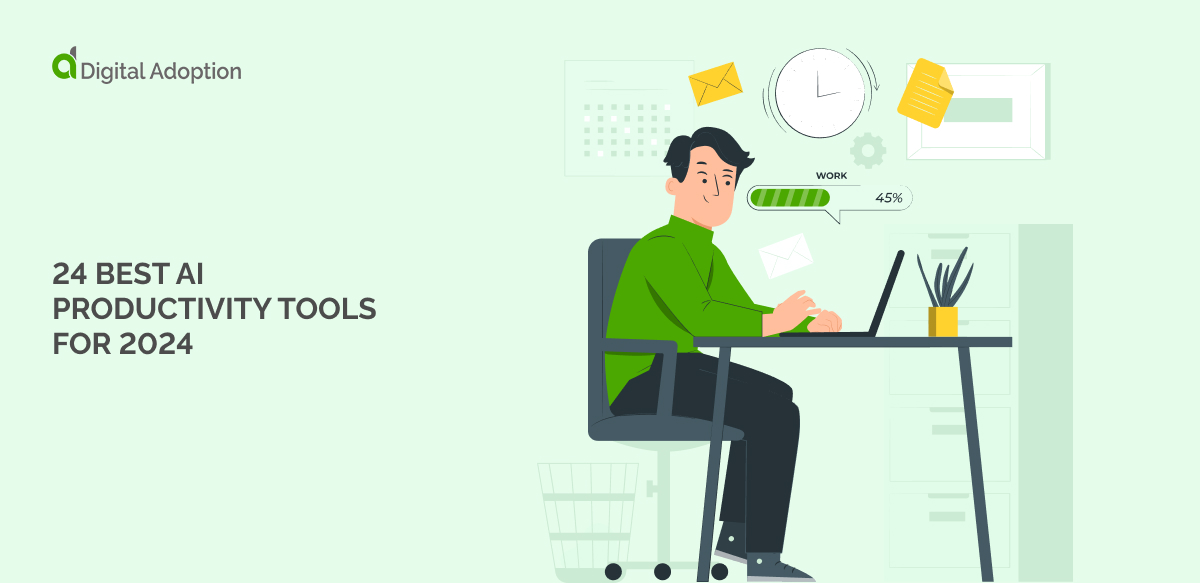How do you create a winning digital adoption strategy?
Like any organizational change effort, you will face obstacles – but with the right plan in place, you can overcome those barriers.
Below, we’ll discover how to develop a winning strategy that gets great results and measurable ROI.
Why Develop a Digital Adoption Strategy?
Unfortunately, digital adoption is not an easy process.
It is certainly not an impossible task, but it does take some effort and strategy.
Users won’t simply adopt new technology just because you tell them to.
Before they can adopt new technology, they need a few things:
- A reason, motivation, or desire to adopt the technology
- The ability or skills to use that technology
- Assistance and training
Depending on the circumstances, you may have to do significant legwork developing an adoption process.
A company that adopts new, disruptive technology may face significant resistance from employees.
They may lack motivation, skills, and reasons for adopting that technology.
Other cases may be less challenging.
But you should still develop a digital adoption strategy, because:
- It will increase user productivity and efficiency
- Fallout, such as customer abandonment or employee resistance, can be reduced
- A cost-effective adoption process will positively impact the company’s bottom line
For these reasons, among others, you should seriously consider developing a digital adoption strategy.
Let’s look at a few key points that can help you create one that gets great results.
What Goes Into a Winning Digital Adoption Strategy
Imagine that your company adopts a new software platform … but only a third of employees actually use it well.
Another third are somewhat capable, but still less productive than they could be.
And another third barely adopt the new program at all.
What could cause these problems?
A few culprits stand out:
- Poor training and onboarding
- Ineffective communication on the part of change managers and business leaders
- An unsophisticated adoption program
To prevent these errors, it’s important to create a winning adoption strategy that puts users at the center.
If your users are customers, then your strategy should be customer-centric.
If those users are employees, then that strategy should be employee-centric.
Here are a few ways to develop a strategy that puts users first – and gets great results for your business.
Digital Training and Onboarding
Digital adoption means the adoption and implementation of digital technology, used for its intended purpose and to its fullest extent.
In a case where only some users apply a technology – or where it is not being used to its fullest extent – problems arise.
To prevent the problems mentioned earlier, it is critical to develop a stellar onboarding program.
That program should:
- Use modern training tools, such as e-learning software and digital adoption platforms
- Aim to shorten time-to-competency as much as possible
- Focus on creating a great user experience and learning experience
A goal-oriented, systematic onboarding program – with a focus on training – will drastically improve adoption results.
Users will be more competent, more quickly.
As a result, they will be more satisfied, productive, and loyal.
Change Management
When a business adopts a new digital technology, it should evaluate the scale of the proposed change.
The more complex a change initiative, the more the business would benefit from a formalized approach to change management.
Organizational change management is the business discipline that assists with business transformations.
These transformations could be large. Or they could be small.
Regardless of the size of the change, organizational change management can help by:
- Analyzing problems and proposing solutions
- Developing a vision for change and a strategic roadmap for achieving that vision
- Motivating employees, reducing employee resistance, and mobilizing support
It is important to remember that not all digital adoption efforts – or change efforts – succeed.
Change managers and leaders can help prevent failures, decrease costs, and get better program results.
Agile and Lean Adoption Methods
In today’s fast-paced economy, speed and adaptability are more important than ever.
The more quickly an organization can produce, adapt, and react, the better it will fare in the digital marketplace.
To enable this speed, new business models have arisen, such as lean and agile.
Agile is an approach to software development that emphasizes:
- Responsiveness over following static plans
- Customer collaboration over contract negotiation
- Working software over documentation
- Individuals and interactions over processes and tools
This style of development often involves frequent stakeholder meetings, ongoing communication, and an emphasis on adaptability.
Lean is similar to agile thinking.
It is a business approach that stresses customer-centricity and speed.
Its goal is to release new product versions quickly. And each new version is developed using customer feedback and data.
While lean originated in manufacturing, it has spread into other disciplines.
Eric Ries, for instance, applied it to business development.
Like agile, Lean has spread from software development to other business areas.
It can be beneficial to research and apply these methods to your digital adoption program.
A digital adoption program that is user-centric, adaptable, and data-driven will certainly produce better results than a static, unresponsive one.
Conclusion
A winning digital adoption strategy doesn’t happen by accident.
It requires specific goals, careful planning, and thorough execution.
If you research and apply the ideas mentioned here, you will stand a better chance of producing a great user adoption program … and getting great results.

 FACT CHECKED
FACT CHECKED













